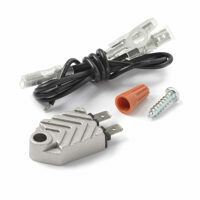Why High Fees on eBay and Amazon Are Driving Vendors to Alternatives
Introduction
For years, eBay and Amazon have been the go-to platforms for online sellers, but the fees associated with selling on these giants are pushing many vendors to look for better alternatives. As marketplaces continue to evolve, platforms like ours, which focus on low fees and a targeted niche, are becoming more attractive. Here’s why high fees on eBay and Amazon are making sellers reconsider their options.
The Hidden Costs of eBay and Amazon
1. Listing Fees and Final Value Fees One of the most frustrating aspects of selling on eBay is the plethora of fees sellers face. First, there are insertion fees for listing an item. Then, once an item sells, vendors must pay final value fees, which can be as high as 12% or more, depending on the category.
Amazon has a similar setup with their referral fees, which vary by category but are often around 15%. On top of that, Amazon charges fulfillment fees if you use their FBA (Fulfillment by Amazon) service, which can quickly eat into profits.
2. Payment Processing Fees In addition to eBay’s final value fees, sellers are also subject to payment processing fees when customers pay via PayPal or eBay’s managed payments system. These fees can range between 2.7% and 3.5%, adding another layer of cost to each sale.
Amazon sellers aren’t exempt from these fees either. Amazon automatically deducts payment processing fees from each sale, further decreasing the vendor's earnings.
3. Subscription Fees To list more products and unlock additional selling features, many sellers on eBay and Amazon subscribe to premium accounts. For instance, eBay charges sellers $21.95 to $299.95 per month for their store subscriptions, depending on the level of access they want. Amazon’s Professional Selling Plan costs $39.99 per month before any additional fees.
Why Alternatives Are Gaining Popularity
Sellers are turning to niche marketplaces like our Small Engine Chainsaw Parts Marketplace, where fees are significantly lower and vendors can retain more profit. For just $5/month, vendors get unlimited product listings and are only charged a 5% transaction fee when an item sells. There are no hidden fees, no complicated fulfillment charges, and no excessive subscription plans.
These alternatives allow vendors to build their brands and increase their profits while avoiding the ever-increasing fees of larger platforms.
Conclusion
If you’re tired of the high fees and complexities of selling on eBay and Amazon, it might be time to consider switching to a marketplace designed with your needs in mind. Lower costs and a specialized customer base can make all the difference in growing your business.
.png)
